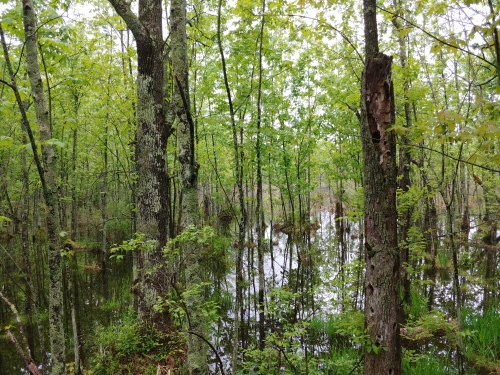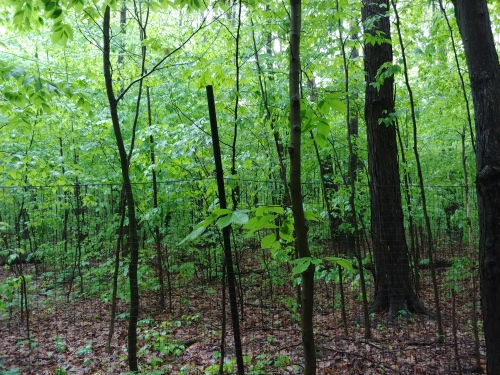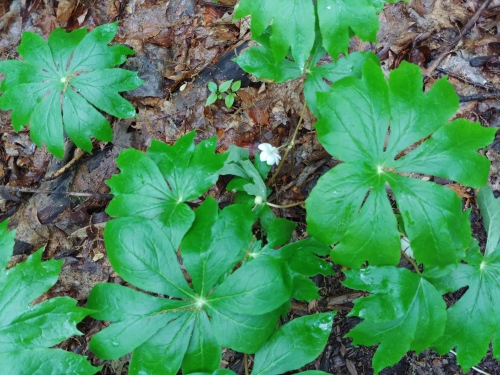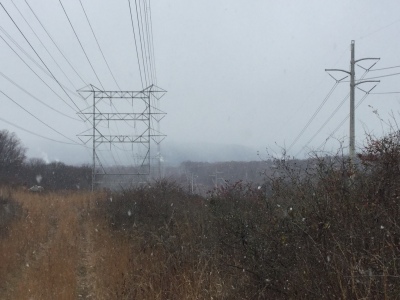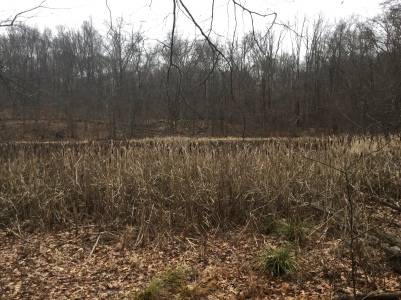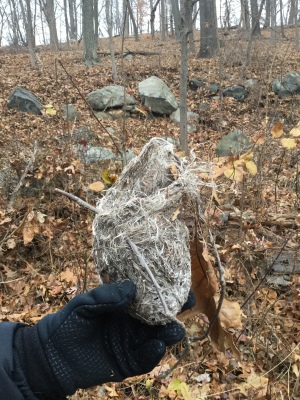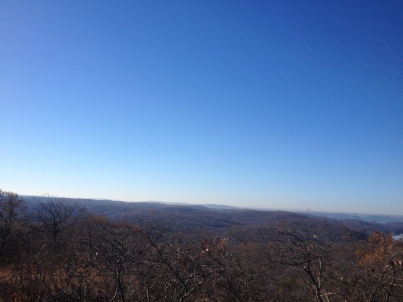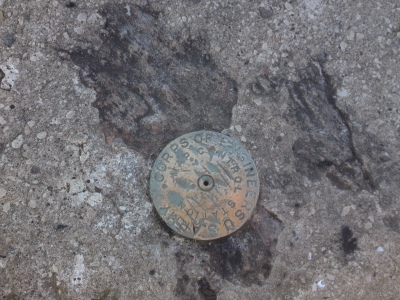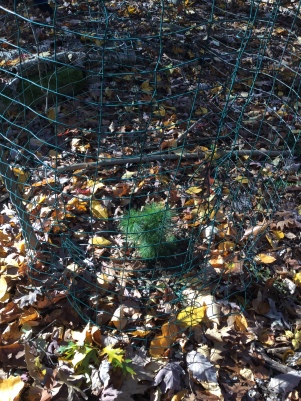
A dense tree cover. The phone camera makes the lighting brighter than it actually was. © S.G.Hansen
The morning was cool and sunny and clear. Young robins foraged around the small lawn medians at the parking lot. A few Red-winged Blackbirds sang among the reeds. A small crowd of immature European Starlings raucously gurgled around the feeder station. A young Red-bellied Woodpecker sounded high-pitched “querr”s.
I started a little bit earlier today, just before 8. Again, late. The beginning was a little bit quieter than last month’s. We are full in breeding season. The migrants headed for Canada have passed, but the summer birds that do stick around are having their second or thirds broods. I expected some song, plus fledglings and juveniles.
The canopy and mid-story were substantially more dense, darkening the air. The squirrels had decreased in number, but the chipmunks’ presence possibly doubled. A few minutes in the walk, I realized I forgot to apply bug spray. I unwisely thought I would have no need for it. The mosquitoes harassed my ears along the way (and one black fly towards the end). I ambled slowly throughout the walk, barely stopping for better looks.
At the boardwalk, I saw a family of White-breasted Nuthatches. Two juveniles – they sounded squeaky in comparison to adults – flitted from one tree to another, the feathers on their backs raised, wings poised. One of their parents flew to the same tree, “yank”-ing, noticeably in a deeper timbre.
Far in the woods, a Great Crested Flycatcher called. Prrrrt. Prrrrt. Prrrrt. Half a dozen pewees “pewee”‘d. A couple Red-eyed Vireos sang occasionally. Young woodpeckers continued to call. A Scarlet Tanager – who can be described as a robin sounding hoarse – lilted a broken song. A Veery sang as well. An Ovenbird twittered “teacher, teacher, teacher, teacher, teacher” a couple times. A few titmice and chickadees made their presence known with occasional calling. I’m sure their numbers were far greater than they let on.
A Wood Thrush sang, his steady, melodious trills slightly echoing among the myriad leaves. He sounded as if he were right above the trail. As soon as I rounded the corner, he had stopped. Disappointed I flushed him a way, I continued. Then I saw a flash of fluttering, a fleeting moment of two thrushes fighting. One briefly perched and then flew away. The second starting singing just off the path. The trills began to bounce off the leaves once more.
On the Les and Vail Severinghaus trail, just passed part of the trail that parallels, Salem Drive, I heard bizarre croaking. Walking closer, I discerned the source to be a young Common Raven. Far ahead, in an oak tree, the juvenile – a pitch-black splotch against deep green – begged, wings vibrating. Its parent flew to it. Their bills met. The juvenile uttered shrill gurgled croaks – too abstract for words, truly – as it swallowed whatever it was fed.
Three crows cawed. A Cooper’s Hawk called. Kek-kek-kek-kek-kek-kek-kek. The adult raven moved inward as its offspring flew to the trees closer to the Salem Drive apartments. The crows began to mob it, cawing, diving. The Cooper’s hawk called again. I presumed that the raven had flown in to drive the accipiter away, but the crows got another idea. I walked further down the winding path, above which the raven was perched. I unintentionally deterred the crows away. The Cooper’s called once more and zipped through the trees. The raven kept to the same perch, un-moving except to swivel its head around to study me.
eBird lists ravens as uncommon to Sapsucker Woods. I thought the fact interesting considering they clearly bred here this year.
Farther ahead, off the path, a Wood Thrush scavenged the forest floor. For nesting material, I thought. A moment later, a look through the binoculars revealed it carrying a worm in its bill. Its back and head were colored quite a reddish brown.
At the Wilson Trail junction by the pond, a Yellow Warbler and Common Yellowthroat sang. Two Mallards took off to head to the other side. I spied no herons.
More along with Wilson Trail, a House Wren warbled by the nesting box next to the stream. Activity zeroed to no new birds following my crossing the bridge. A second Yellow Warbler sang. The sixth Song Sparrow of the sang trilled. More Red-winged Blackbirds, Common Grackles, and American Goldfinches sang and called and flew high above.
I returned to the front parking lot. On a lone electricity pole, beyond the back parking lot, a Common Raven croaked, its beard fluffing magnificently.
eBird list located here.
